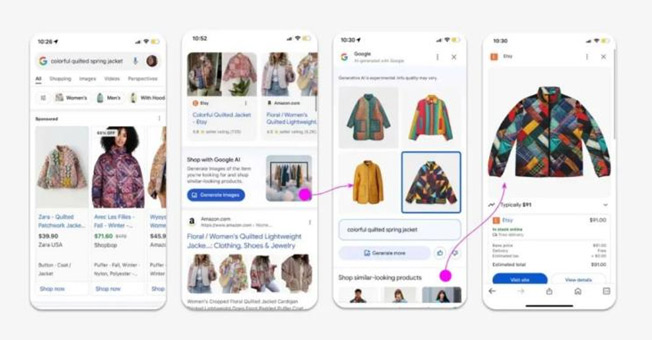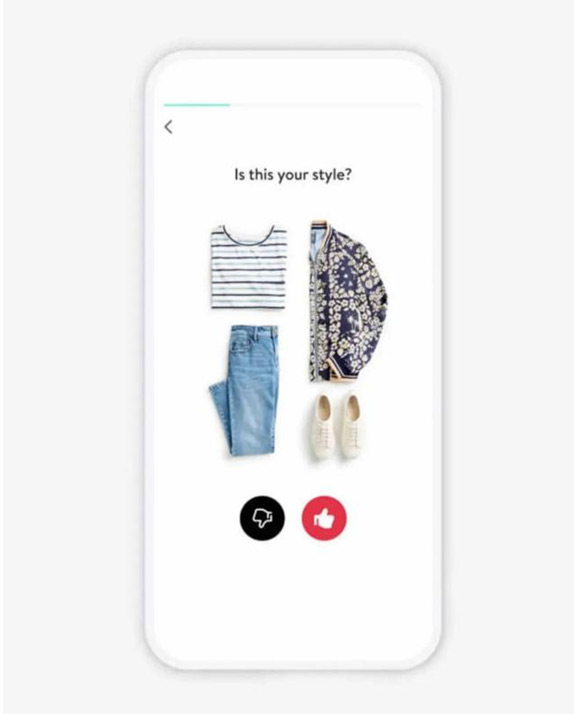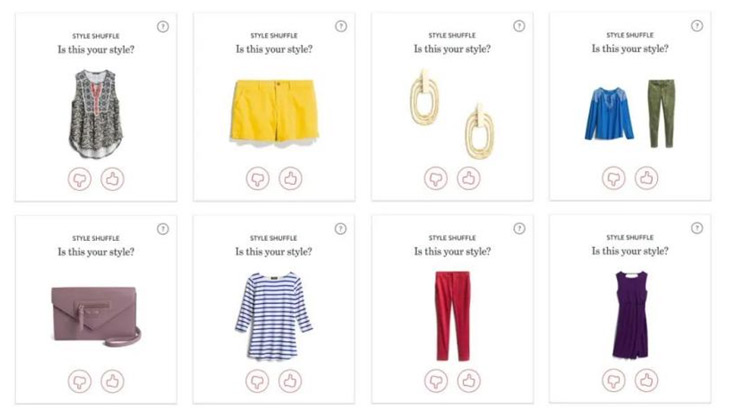With the surge of generative artificial intelligence, data science, and artificial intelligence have once again become hot topics in the fashion retail industry. Although these technologies have been continuously influencing industry transformation over the past decade, the notable difference in this current wave of enthusiasm is that generative artificial intelligence can create more complex and complete design outcomes, such as text, images, or even videos, without the need for people to possess a large amount of prior technical knowledge.
This is also the most discussed issue at this week's SXSW conference in Austin, USA (the largest technology and arts innovation carnival in the United States). Many technology developers believe that many of the new tools emerging around generative artificial intelligence do not completely outsource decision-making to machines but rather help to extend existing human capabilities. Some of these new tools provide support behind the scenes, while others have already entered the public eye.
In February of this year, Google began testing an image search capability that allows online shoppers to convert their product search queries into images and match them with real products in the real world, while Stitch Fix announced a tool to help retailers manage inventory more accurately. Tapestry is researching how to use generative artificial intelligence for fashion trend prediction, and in December of last year, Meta began testing how to train personal AI assistants to provide fashion styling advice for individuals.

At the SXSW conference, Lilian Rincon, Senior Director of Google Shopping, pointed out in a conversation with J Crew's Chief Information Officer Danielle Schmelkin that the prospects for promoting AI shopping are extensive. This is because the current interest in artificial intelligence is at its peak with the rise of Generation Z, who grew up with smartphones and are very receptive to AI tools.
01.
Google: Generative AI Shopping Tool
Google Shopping is testing an artificial intelligence shopping tool called Search Generated Experience (SGE). People can use text prompts to generate images that look like the products they imagine, and then Google will search online for similar-looking products. For example, someone might input the prompt "colorful stitched spring jacket" to generate an image, and then refine the accuracy of the prompt based on the image, ultimately finding items that visually match the creation. Google research found that 20% of people need to input five or more words to identify the exact product they are looking for.

"We call this process 'from dream to reality'," Rincon said, "There is a vision in the minds of consumers." In an early preview for Vogue Business, Rincon demonstrated the search process for the down jacket with polka dots that she imagined, quickly finding a matching real product. The tool is currently only available to U.S. users who have opted into SGE through the search lab experiments, but Rincon said that Google has seen "good usage" and people are able to quickly grasp how to use this technology.
Google Shopping is also expanding its virtual try-on tool launched last July, which allows online shoppers to virtually try on a range of clothing using generative AI on models. Google has now extended this virtual try-on technology to handle flat product images — meaning small retailers who may not have the budget to hire models for clothing shoots can also utilize Google's virtual try-on tool.
02.
Stitch Fix:A forward-looking simulation styling tool
Stitch Fix's business model revolves around algorithms to help expand the demand for personal stylists. It can analyze customer feedback to narrow down options and prioritize potential inventory suggestions to stylists, who then further adjust and send them to customers.
Recently, they developed an internal tool based on this feature, which provides inventory management recommendations for retailers. Although this tool has been in development for two years, Stitch Fix is now sharing its workings: the core of this technology is a simulator that predicts future behaviors of customers and stylists. For instance, when considering a single item, the simulator takes into account details such as purchase influencers (the likelihood of a customer buying that style) and customer preferences (how much they desire it compared to other options).

Stitch Fix's Director of Business Algorithms, Sophie Searcy, discussed how the company uses artificial intelligence to predict trends, stating that the tool can help speed up inventory decisions and improve accuracy. "We have about 3 million customers and hundreds of thousands of items, so we're talking about potential matches in the billions among all these customers and items. For each customer, we only pick five items to send. This simulation actually takes on tasks that humans cannot accomplish, allowing them to gain a deep understanding of how things will unfold and use it for demand forecasting, enabling people to make the best purchasing decisions."
She said the tool can not only identify popular items but also recognize products that may have development opportunities. For example, a certain style of graphic T-shirt may perform averagely, but the simulator finds that for a certain segment of customers, it meets needs they haven't fulfilled, so they want to buy more. Now about 70% of the buying team's "re-buy" decisions are assisted by algorithms, and this proportion is expanding. However, Searcy also pointed out that human instinct remains a crucial part of the purchasing process.
Stitch Fix is also trying to "cold start" new styles through the gamified "Style Shuffle" tool, which invites customers to rate clothing and items in a Tinder-like voting manner. Chief Sales and Customer Service Officer Loretta Choy stated that Stitch Fix can display items not currently in inventory to understand consumer needs early.

In this month's earnings conference call, Stitch Fix's newly appointed CEO Matt Baer stated that the company is working to deepen the relationship between customers and stylists, and is implementing "financial streamlining" to improve profitability. Previewing these items through Style Shuffle and then testing them through new simulator tools provides an effective way to obtain feedback.
"I think this will be our way of looking into the future," Choy said. "If we can continue to use this tool to make better and better decisions, that would be fantastic. When we talk about productivity, this is one of the ultimate goals. We never want to overbuy."
03.
The Artificial Intelligence Stylist at Meta
The second generation of smart glasses produced in collaboration between Meta and Ray-Ban is now equipped with a multi-mode artificial intelligence assistant. Some users can use this assistant for testing purposes, asking for information, including style advice.

For example, a person wearing glasses can look into a mirror and say, "Hello Meta, tell me, how should I match this outfit?" Then, the glasses will capture the image and use computer vision to analyze it, while Meta AI provides audio feedback on the appearance and suggestions on how to pair it.
04.
Using GPT for Prediction and Customer Insights
The consumer insights team at Tapestry Group is attempting to use ChatGPT and similar tools to complement its qualitative research in trend forecasting, says Alice Yu, Vice President of Consumer Insights at Tapestry. For instance, this might involve using generative AI tools to uncover key terms related to emerging trends or to expand on existing trends like "Y2K" or "Barbiecore." She adds that such research typically requires strong support from the research team. Researchers can then use generative AI tools to create prototypes of mood boards based on these insights, which can then be shared with focus groups to gather more data.
Employees of Tapestry's brands Coach, Kate Spade, and Stuart Weitzman now have access to data dashboards to share insights relevant to their roles. For example, store staff can use the dashboard to better understand the most popular products and be able to promote a particular item to in-store shoppers.

However, Yu cautioned that in her work, "why" is often as important as "what". While data science may provide facts and data points, it can unleash more power for valuable face-to-face research. She noted that one-on-one research often uncovers more valuable insights. For instance, during a wardrobe inspection, a customer's description of "bright florals" actually matched a small pattern on a subdued-colored top; although the customer claimed to like vibrant floral accents, the purchased item didn't match the description.
This case also illustrates the ongoing conflict between artificial intelligence and human intuition. Yu stated at the SXSW panel discussion that human empathy is crucial for researchers. In an interview, a young consumer revealed being mocked for wearing a brightly colored sweater, which ultimately inspired Coach's "Wear Your Shine" marketing campaign. "Essentially, we're talking about people. We're not talking about data or facts. Fashion is an industry about people, and their stories always matter."
Last month, the lower house of the French parliament proposed a new bill to crack down on fast fashion, aiming to curb t...
Take moreNew Gap CEO Richard Dickson has spoken about his experience upon joining the struggling company from toy business Mattel...
Take moreShanghai Manxuan Industry Co., Ltd(SWS), a pioneer in zipper manufacturing, is proud to announce the construction of a c...
Take more